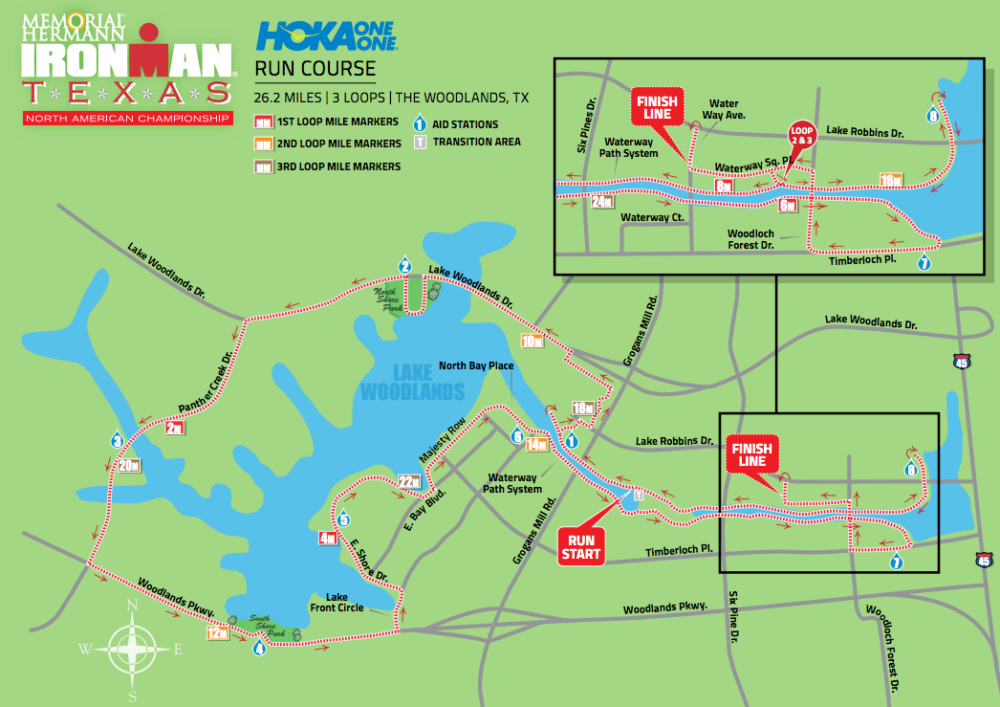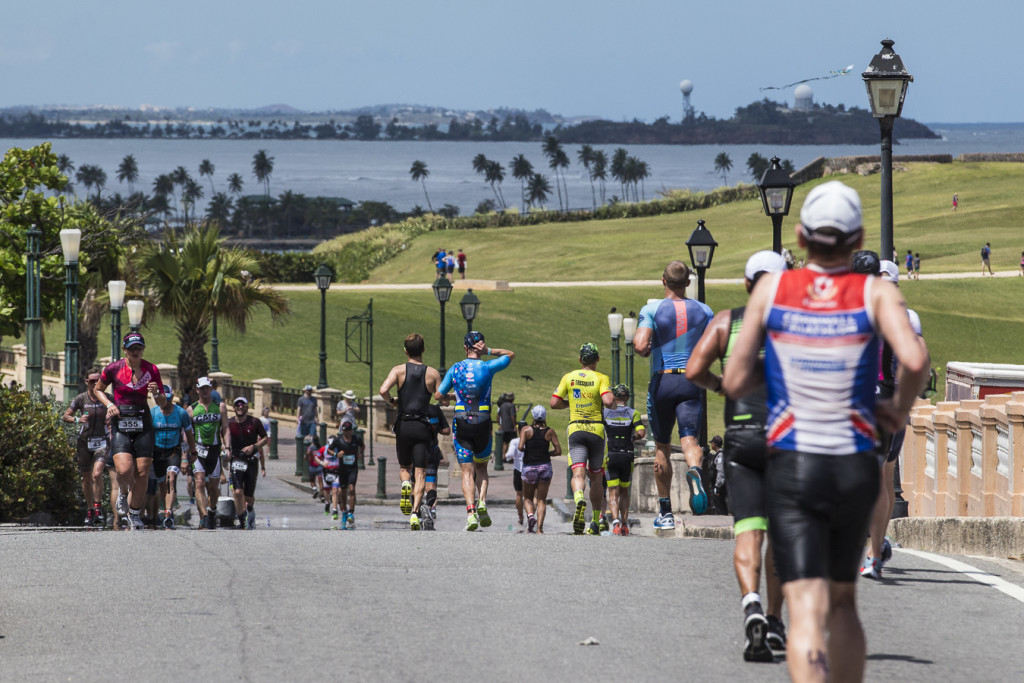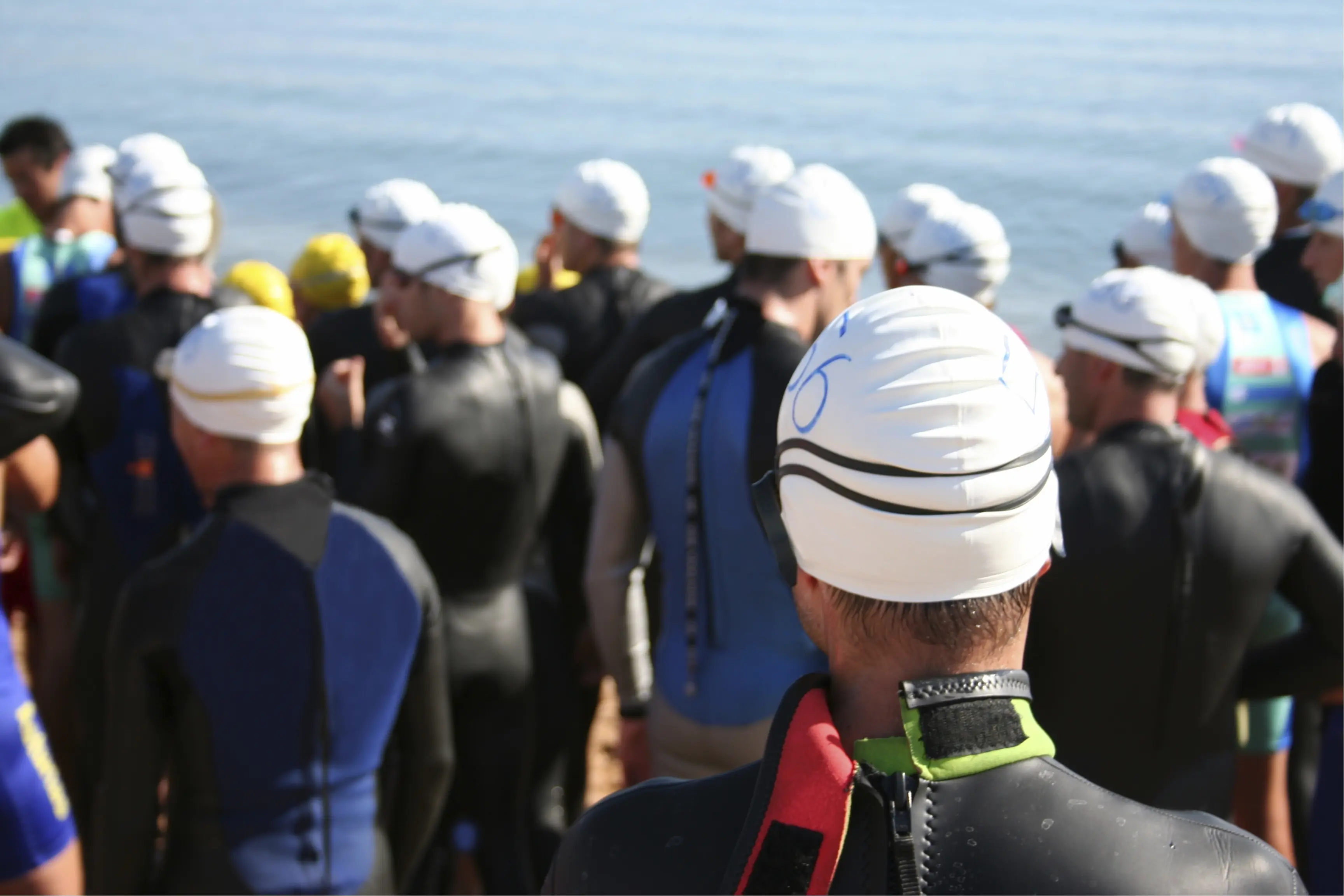Athletes MUST claim their slot in-person at the qualifying race during the IRONMAN 70.3 World Championship Slot Allocation and Roll-down Ceremony. Please check the event schedule for time and location of the ceremony. As others haves stated, there are very few (if any) slots rolling down since the 70.3 WC was moved to Vegas. Add to that the fact most 70.3's now only have 30-35 spots (instead of 50) and chances of anyone getting a LVQ are pretty miniscule unless you're first in the smaller AG's or 1-2-3 in the larger AG's (the M30-44 AG's). Details on the 2021 SunSmart IRONMAN 70.3 Busselton World Championship Qualification will be updated shortly. Below is for information only. World Championship Roll Down Process The 2020 IRONMAN 70.3 Busselton will have 40 slots to the 2021 IRONMAN 70.3 World Championship held in St George, Utah, USA, 17-18 September 2021. The 2020 IRONMAN 70.3 Busselton will have 40 slots to the 2021 IRONMAN 70.3 World Championship held in St George, Utah, USA, 17-18 September 2021. During Athlete Check-In you will be asked to ‘opt in’ and confirm you intend to accept a slot should you qualify for the IRONMAN 70.3 World Championship.
'], 'filter': { 'nextExceptions': 'img, blockquote, div', 'nextContainsExceptions': 'img, blockquote'} }'>At the end of 2017, Ironman announced a new system for pros to qualify the Ironman and 70.3 World Championships. Now that we’re actually starting the 2019 season and you’re starting to look forward on your calendar, let’s review what you’ll see new this year and how it’ll change who’s on the start line come October.
How it works
The qualifying system for professional athletes now closely resembles the age group qualifying system. There is a minimum of one slot for men and one for women at each pro race; if the winner already has a spot, it rolls down until someone takes it.
There are a few specifics unique to the pro field that can make it a little more complicated. The world champion gets an automatic spot for five years after winning. So, Daniela is set. Last year’s podium also automatically qualifies for next year’s race. And the 70.3 world champion gets an automatic spot to Kona and vice versa, just for fun. All of these require the athlete to complete a “validating” race, where they complete the distance within the racing year. Everyone else has to win a fresh spot this season (which actually started in the middle of 2018).
For 70.3 qualifying, there is one spot per gender at every pro 70.3 race and two at regional championships. There are 85 world championships slots available for men and 85 for women. Simple.
For Kona qualifying, there is one slot per gender at most races, two at regional championships, plus extra “floating slots” allocated to specific races, usually regional champions or bigger races Ironman chooses. (You can see the full pro calendar with its allocations here.) This is where it gets a little confusing. The two floating slots will either be split evenly between men and women or will both go to one gender, based on how many men and women are on the start line that day. More on this in a moment. There are 100 slots total.
The Good
- Under the old pro qualifying system, which required athletes to chase points, many felt there was an over-racing problem. Some of the best athletes showed up at Kona too tired to perform on the Big Island. This fixes that.
- Statistically, the pro women who qualified for Kona had raced on average more Ironman events than the men. The lower number of spots available required a higher number of points to secure one. This, in some ways, fixes that.
- It also lowers the barrier of entry for new athletes or athletes coming back from a pregnancy or injury. They no longer start the season at a point deficit. They just have to win one race.
- You want to qualify for the Ironman World Championship? Win an Ironman. You want to be a 70.3 star? Win a 70.3. Separating the qualification systems allows more specialization.
- All of this could make things more exciting, both as athletes battle it out in qualifying races and at the championships where you should have fresher athletes and the potential for more Cinderella stories.
The Bad
- It could also be a total crapshoot. Everyone has bad days and good days. Now you have to win to guarantee a spot, which means some people, who were consistent over the season but never outstanding on any given day, could be out of luck.
- There is also still quite a bit confusion over how Ironman allocates the “floating slots.” At Ironman Arizona, 15 women and 32 men started, and there were three slots for the men and one for the women. At the regional championships at Ironman Mar del Plata, 15 women and 23 men started; four men and two women got slots (not counting automatic qualifiers who were validating their spots). And at Ironman Western Australia, there were 10 female and 13 male pro starters and the slots were equal. Athletes are a bit frustrated at not knowing what they need to do to qualify.
- Despite assertions to the contrary, do not expect there to be an equal number of pro men and women on the Kona start line in October. The gender breakdown will likely be similar to previous years.
Is it better?
Most athletes will agree the new system fixes a number of problems with the Kona Pro Ranking (KPR) system. But there’s also a reason Ironman switched to the KPR back in 2010-11. It was an attempt to award the best athletes over the course of the season (as opposed to just at any one race). There’s probably a combo qualification that could work best: some win and you’re in, some omnium overall spots.
There’s also still the specter of inequality that continues to hang over the Kona start line. While the 70.3 spots are equal-equal, Ironman continues to grapple with the gender breakdown at its titular championship level.
It seems likely Ironman will tinker with its allocation formula. Expect small changes around the edges in future years. It also seems likely there may be fewer 70.3 world spots in years to come; 85 for each gender is a ton, and it seems unlikely that many pros will actually make the start. But for now, this is what you’ll see from your favorites racing towards the fall championship season.
Some of the most commonly asked questions about the process and requirements of age group Kona qualification and the statistics I provide on this.
Select a question below to learn more.
How do you qualify for the Ironman World Championship in Kona?+To qualify for the Ironman World Championship you will normally need to place highly in your age group at an Ironman race. Each race will carry a number of qualifying slots for age group athletes which will be allocated across the age groups present on race day. Qualifying slots will be offered to the fastest athletes in each age group following the race through a roll down process.

For example, if you are M40-44 and there are 5 slots on offer for your age group at your race, then placing in the top 5 within your age group would ensure you a slot. Not everyone takes a slot and unclaimed slots are offered to subsequent finishers in finishing order. So, in the example, 6th place might claim a slot if third place doesn't take one.
While Ironman races are the primary method of qualification a handfull of 70.3 events also carry qualifying slots. These include the Hawaii 70.3 and a number of races in China.
You can find a list of qualifying races and access statistics on them from my Kona qualification page.
How many slots are available at each Ironman race?+The number of slots given to each race varies. Forty slots is the standard offering for the majority of races. There are a few exceptions, most notably regional championships carry 75 slots in the current qualification season. Each race will allocate those slots across their age divisions.
Slot numbers are usually known well in advance, you'll find details on the current allocation of slots on my upcoming races page.
What age group do I qualify in? +
+
Qualification is based upon your age group at the qualifying race.
As the qualification season overlaps calendar years it's possible to qualify in one age group and then race Kona in another. You always qualify in your current division. If you are M35-39 at your qualifier you compete for M35-39 slots even if you would be M40-44 at the Ironman World Championship.
How many slots are available in my age group?+Every age group present on the start line will receive 1 slot. After that, slots are allocated in proportion to the size of each age group. The method has varied over the years and not always been clear, but currently slots are allocated using the D'Hondt method as I've outlined here.
You can find details n the most recent slot allocations for each age group and on qualification times within those age groups on my Ironman Age Group pages.
How does the roll down process work?+Kona slots are awarded by a roll down process. Starting with the winner of an age group and working back qualifying slots are offered until all the allocated slots have been claimed. If an athlete turns down a slot the opportunity will pass further down the age group.
There is no restriction on how far back a slot can roll. There have been instances where a slot has carried back dozens of places within an age group as nobody was present to claim it.
If an age group has no finishers or no finishers who claim a slot, that slot will pass to another age group within the same gender. This will be the next age group that would have been allocated a slot.

As roll down is unpredictable I don't factor it into the statistics and data I generate on this site. Slot allocations and times assume all slots are claimed.
How do I qualify at an Ironman 70.3 race?+For those Ironman 70.3 races that have Kona slots the qualification process is essentially the same: slots are awarded through a roll down in finishing order within each division. However, athletes cannot accept slots for both the Ironman 70.3 World championship and for Kona. So, if an athlete accepts a 70.3 slot their Kona slot will roll down in their age group.
How fast do I need to be to claim a slot?+How fast depends on a wide range of variables, including, but not limited to:
- The race course. Ironman Austria is a course that always produces fast qualifying times, while Ironman UK will always be a significantly slower course to qualify on.
- Race conditions. Ironman Frankfurt is usually a fast qualifier, but when there's a heatwave qualifying times slow.
- The competition. Ironman Frankfurt is known for drawing a competitive field. Ironman Argentina is more remote and doesn't draw the same competitive strength.
- The number of slots. Typically the biggest age group will have 5 or 6 slots, but a championship race might see some age groups receive 10 or more slots. Pushing further back in the field potentially means slower times and with more slots there's more chance of roll down.
Every race will give a different answer and even when the number of slots and levels of competition are quite consistent it's possible for conditions to throw a curve ball. You can develop a feel for the likely times by looking at past results. My Kona qualification page is a good starting point and can direct you to qualifying statistics for individual age events and age groups.
What's the best race to qualify at?+Aside from the many factors that determine how fast qualification is, there's also the matter of an athlete's strengths, weaknesses and preferences. If they've broadly achieved the level of fitness necessary to have a shot at qualifying there will be a number of suitable races.
Some races may be better than others for qualification, it's just that the differences are small.
If you're looking to determine your best options then downloading and reviewing your age group qualification statistics is a good starting point. Each booklet presents a summary of average qualifying times across all Ironman races and then more detailed statistics for each to give some indication of splits and results history. This can help establish which races are potential qualifiers based on times, then you'll need to research further to determine is the course is suitable. Slow qualifying times don't mean an easy qualifier.
Of course every would-be qualifier is considering the same data as you. A race that looks like a great qualifier in 2019 has the potential to become more competitive in 2020.
If you're still not sure I offer consultancy and bespoke results analysis for race selection. Find out more ⇨
If I can't qualify, how else can I race in Kona?+There are a number of other ways to get to Kona outside of direct qualification. First and foremost is the Legacy program for athletes who have completed 12 Ironman races and never been to Kona. One hundred such athletes get places at the Ironman world Championship each year.

A handful of slots are auctioned for charity on ebay; if you have sufficient funds you can gain a place on the start line. Or alternately, if you are an executive, you can pay to be part of the Ironman Executive Challenge where you compete against other executive for your own small set of Kona slots.
Ironman 70.3 Qualifying Slots Championship
If you're interested and want to know more about any of my coaching services get in touch below.